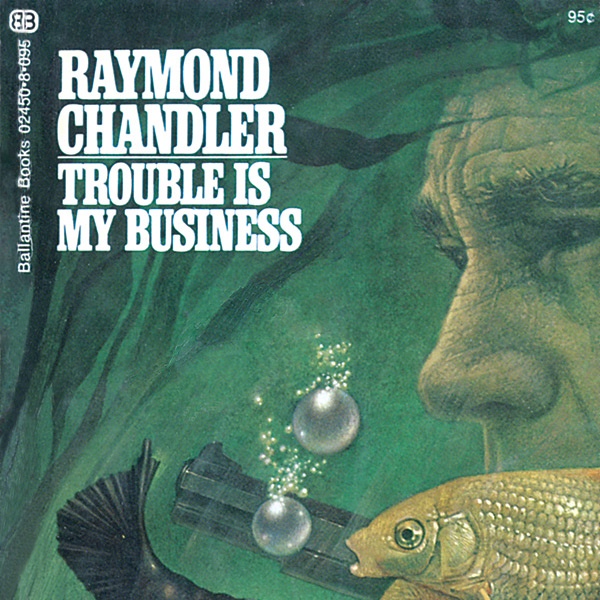 “When in doubt, have a man come through the door with a gun in his hand.” That’s advice on writing from Raymond Chandler, the father of the gritty American detective novel. Chandler was championing the element of surprise and twisty plots. And action!
“When in doubt, have a man come through the door with a gun in his hand.” That’s advice on writing from Raymond Chandler, the father of the gritty American detective novel. Chandler was championing the element of surprise and twisty plots. And action!
If you’re writing a novel, particularly a detective novel, this is the secret sauce.
You might write, “He burst through the door with a gun in his hand. The muzzle on his wicked snub-nose .38 looked like the Holland tunnel. The only thing meaner is the .45 auto. I guess I should have felt lucky that it was just a .38. But I didn’t feel lucky. I felt certain. Certain, that this time was the last time he’d pull a gun on me. And it wouldn’t end like that time in Fresno.”
OK, you can see why I’m not a novelist. But maybe you can get my drift. The man coming through the door adds tension. We can wonder “what’s next?” We know our narrator and the gunman have history. And our hero/narrator isn’t going to let it end like Fresno. Yikes, what happened in Fresno?
Can you feel your brain wanting to lean in?
That’s because we’re wired to love stories. Get that. Wired. And we all are. Some of us more than others, but we all are.
Which leads me to my freshly-minted Chandler Rule of Fundraising: When in doubt, tell a story.
If you are with a donor, tell a story of how one person’s life was changed.
If you are with your boss, tell a story of a donor.
If you are with your board, tell a story of a person who’s different today because of your work.
If you are with a capital campaign prospect, tell a story of a family and their children’s children who will live better lives.
When in doubt, tell a story.
You’ll be tempted to focus on facts and stats. And if you’re the accountant, you have to deal with the numbers. But don’t make the fatal mistake of assuming that, because you do the numbers, the numbers are your most powerful weapon. Oh no, always back your stats with a story.
Paul Zak Ph.D. directs the Center for Neuroeconomics Studies at Claremont Graduate University. He researches how stories shape our brains. Dr. Zak is studying how stories change our behavior. I pay attention to him because, in his studies, one of the ways he measures changed behavior driven by story is through charitable giving. That’s a lot like my world.
Dr. Zak says that there are two key aspects to an effective story. First it must capture and hold our attention. Second, it must transport us into the character’s world.
How do you do that? We’re going to talk in depth in a couple of weeks about how to construct a story. There’s a clear winning formula, more on that soon. For now, think two elements of your story: attention and transport.
Attention. Chandler grabs our attention by having a gunman burst in the door. You can start with the most surprising or unusual aspect of your story of a changed life. What’s most non-stereotypical? What’s unique? What doesn’t fit the mold? Is your story about a man who was the victim of domestic violence? Is your story about a Venture Capitalist who experienced homelessness? Is it about a 12-year-old girl whose best Christmas ever was at your family shelter? Find that unique angle. What makes this story and person special?
Transport. Take your audience into another world. You need to help them step into a world that isn’t theirs. Help them see and hear what it’s like to learn to do drugs from your parents. Help them imagine the desperation and complexity of poverty. Help them experience another life.
Story cuts through complexity and bonds people to the heart of your ministry and your work.
I’m a bit consumed with story and how story drives behavior, so you’ll be hearing about the power of story for a few more posts. Hang with me. Story is powerful stuff.
Still not convinced?
One time Jesus was put on the spot and asked the question, “And who is my neighbor?” What does Jesus do? Quote scripture or cite the law or appeal to common sense? Nope. He launches into what is one of the most enduring, convicting stories of all time. “A man was going down from Jerusalem . . .”
Tell a story. And what did happen in Fresno?
I’d love to hear how you’re using stories. I’d also love to hear your donor stories for the Donor Confidential series we’re doing.
st
![]()
Steve Thomas
Partner, Oneicity
(photo credit: CatsPawDynamics)

